The use of aquaponics has become increasingly common these days because it helps people grow their plants and vegetables, which saves time, money, and space.
The system involves the usage of wastewater from fish, which provides nutrients for the plants. The plants then use up the nutrient from the water and purify it.
So, it is a sustainable way to cultivate plants and farm fish as it requires little monitoring.
In this article, I write about the best plants for aquaponics based on my observation.
The use of aquaponics has become increasingly common these days. You can grow plants such as vegetables and ornamental plants. It saves time, money, and space.
The system involves the usage of wastewater from fish. The water can come from a fish tank or a container with fish. The waste provides nutrients for the plants.
The plants then use up the nutrients from the water and purify it.
It is a sustainable way for growers to cultivate plants and farm fish.
Most plants can be grown in an aquaponics system. Here is a list of great aquaponic plants.
40 Best Plants for Aquaponics
- Cucumber
- Rosemary
- Swiss Chard
- Lavender
- Anise
- Water Lilies
- Marigolds
- Chili Peppers
- Peas
- Brussel Sprouts
- Oregano
- Pineapple
- Watercress
- Bok Choy
- Kale
- Arugula
- Basil
- Mint
- Chives
- Parsley
- Sage
- Carrots
- Fennel
- Lettuce
- Spinach
- Collard Greens
- Tomatoes
- Turnip Greens
- Thyme
- Dill
- Peppermint
- Coriander
- Lemongrass
- Cranberries
- Chamomile
- Watermelon
- Mushrooms
- Cabbage
- Avocado
- Cherries
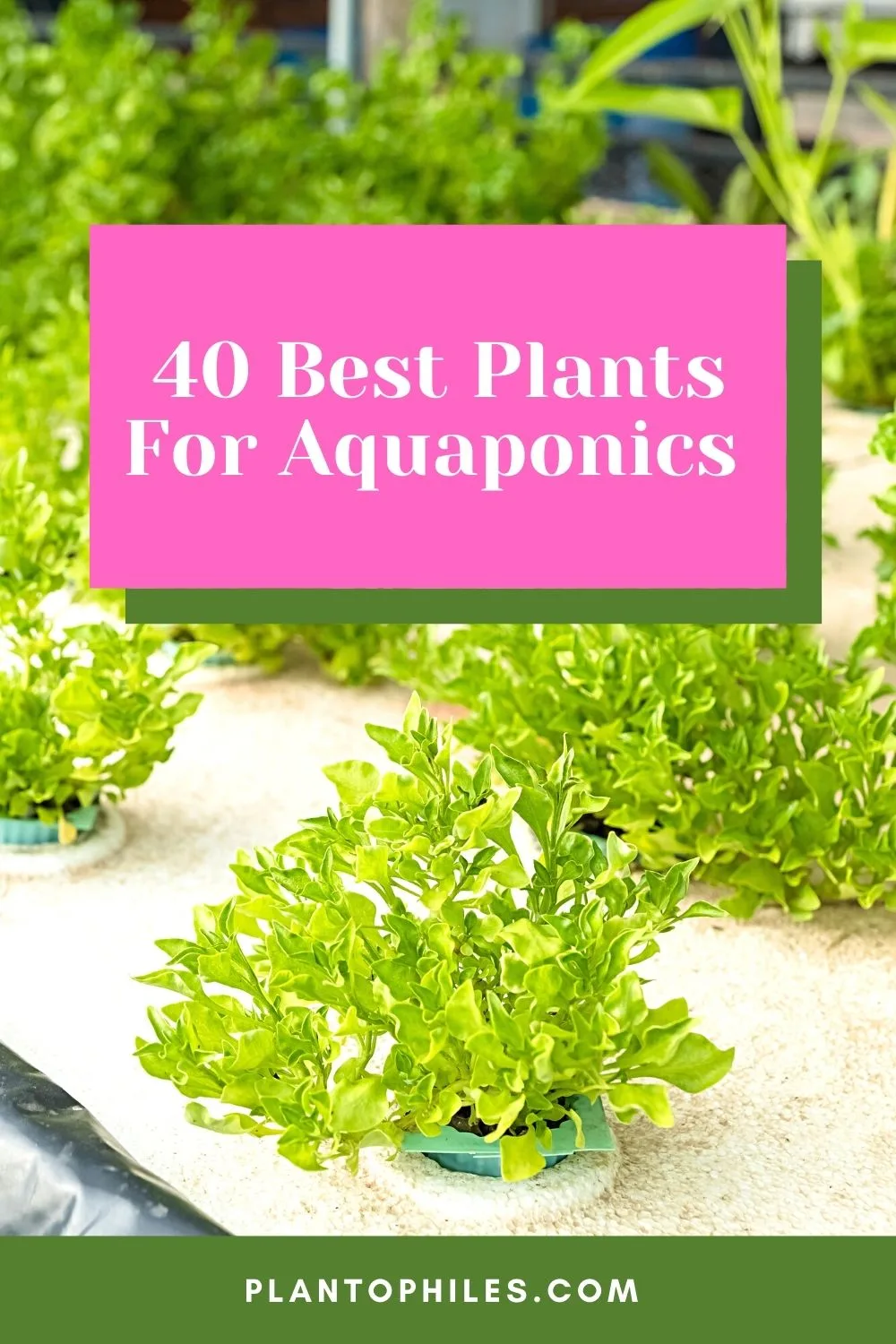
Best Plants For Aquaponics
Table of Contents
Best Plants For Aquaponics
1. Cucumber

The extensive roots of the Cucumber are one reason why this vegetable thrives in an aquaponics system.
The cucumber is considered a great plant to grow in aquaponics because of its extensive root system that can absorb nutrients from the water.
- Scientific name: Cucumis sativus
- Family: Cucurbitaceae
- Temperature: 69°F (21°C)
- Soil: The seed should be planted in fertile soil before transferring to the aquaponics system.
- pH: 6.0 to 7.0
- Environment: Warm temperatures and full sunlight is required according to Clemson University. It should be planted at a distance and harvested occasionally.
- Humidity: Thrives in high humidity.
2. Rosemary
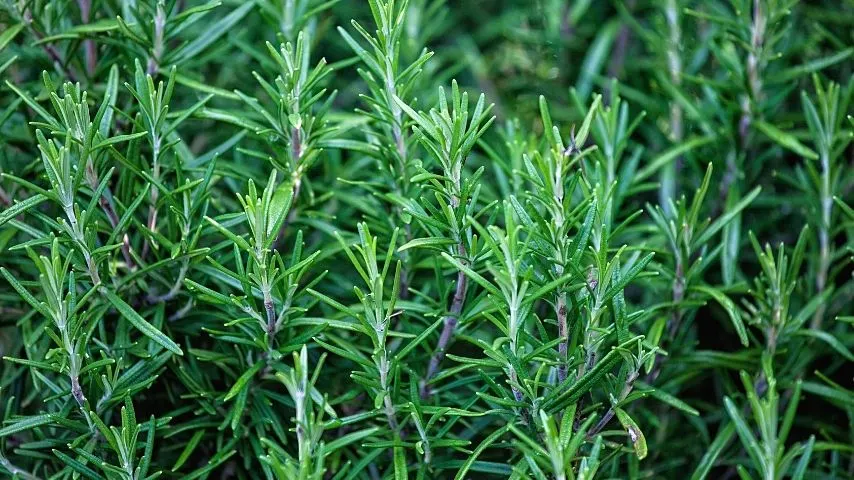
Rosemary is another plant that grows best in an aquaponics system due to its beautiful colors and other benefits.
Rosemary is a common herb used in aquaponic systems because of its healthy and strong growth.
One unique feature of Rosemary is that it helps keep pests at bay because of its strong scent. It helps in protecting other plants.
- Scientific name: Salvia rosmarinus
- Family: Lamiaceae
- Temperature: 75 – 85°F (24 – 29°C)
- Soil: It can be grown in water through cutting, but seeds require germination through the soil.
- pH: 6.0 to 7.0
- Environment: Warm, humid environment with a spacing of at least 2-3 feet apart.
- Humidity: 75%
3. Swiss Chard

Swiss Chard is another popular plant grown in an aquaponics system
With its rapid growth rate, Swiss chard is one of the most popular green vegetables in the aquaponics system.
It grows in many colors, including yellow, red, white, and lime green. It requires low nutrients, making it perfect for aquaponics.
- Scientific name: Beta vulgaris subsp. vulgaris
- Family: Chenopodiaceae
- Temperature: 60 – 75°F (16 – 24°C)
- Soil: Does not require soil, and the nutrients are directly absorbed from the water. Fertilizer is also not necessary due to low nutrient requirements.
- pH: 6.0 to 7.5
- Environment: Swiss Chard is a crop for the spring season or late winter. It can tolerate frost but requires shading in sunlight. Also, the plants should be placed at a distance of 10cm.
- Humidity: 44% to 55%
4. Lavender
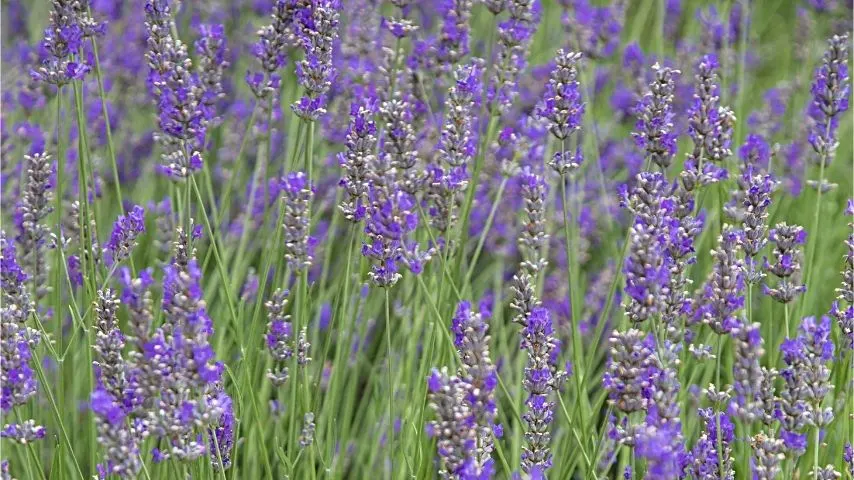
Lavender can grow in an aquaponics system if you provide the right growing environment for it
Lavender is a beautiful herb that increases the elegance of any garden apart from its scent and other benefits.
Though lavender is a plant for the dry climate, it can also be planted in aquaponics if given the right environment.
- Scientific name: Lavandula
- Family: Lamiaceae
- Temperature: 70 – 75°F (21 – 24°C)
- Soil: It is not required if proper absorption is ensured through the roots.
- pH: 7.0
- Environment: Requires at least 6 hours of full sun every day and proper drainage to avoid rotting in roots.
- Humidity: 40% to 60%
5. Anise
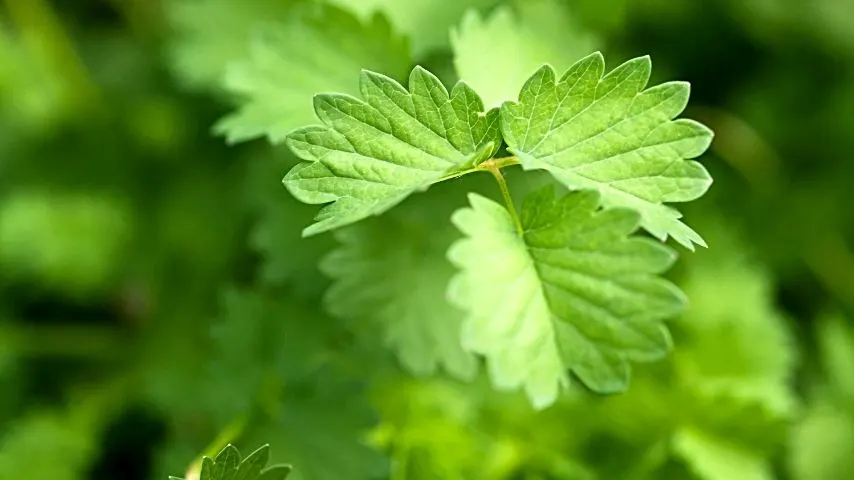
If you’re looking for an easy-growing plant to grow in an aquaponics system, then Anise is your best choice.
Anise is a scented herb used as a flavor in various dishes and perfumes, and fragrances. It is an easy-growing plant but requires more nutrients than other spices.
- Scientific name: Pimpinella anisum
- Family: Apiaceae
- Temperature: 70°F (21°C)
- Soil: The seeds can be germinated in soil and then transferred to the aquaponics system for further growth.
- pH: 5.8 to 6.4
- Environment: The seeds require space, and blue lighting is preferred for best results.
- Humidity: Around 50% to 70%
6. Water Lilies

Water Lilies are another low-maintenance plant.
Water lilies are hardy, beautiful, and low-maintenance plants that come in various colors.
They add to a garden’s beauty and prevent algae growth by blocking the sunlight in the water tank.
- Scientific name: Nymphaeaceae
- Family: Nymphaeaceae; Salisb.
- Temperature: 68°- 86°F (20-30°C)
- Soil: They do not require any soil since they are floating plants.
- pH: 6.8 to 7.2
- Environment: Warm climates. Colder temperatures slow down the growth rate.
- Humidity: 50% to 70%
7. Marigolds
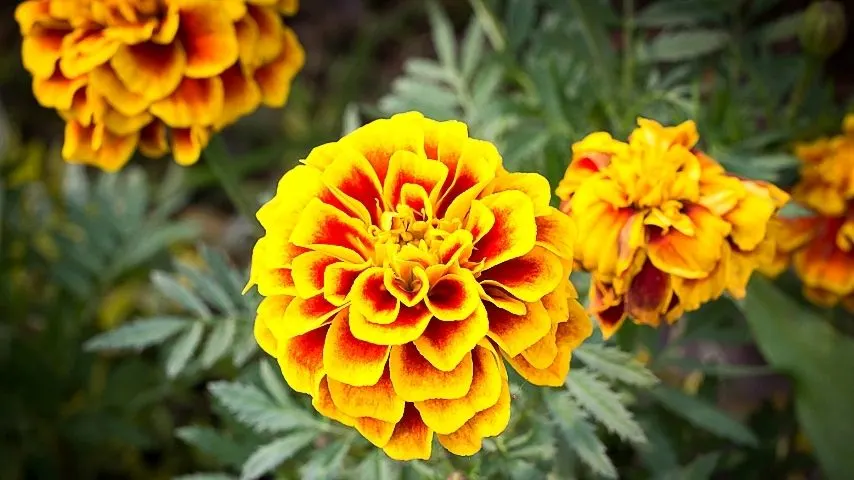
You can plant Marigolds in an aquaponics system along with other vegetables as they serve as pest repellants.
Marigolds are beautiful orange and yellow flowers that can be planted individually and paired with some vegetables because they are excellent pest repellants.
- Scientific name: Tagetes
- Family: Asteraceae
- Temperature: 60°- 70°F (15.5 – 21°C)
- Soil: Soil is not required as long as the nutrients are present in water.
- pH: 5.8 to 6.2
- Environment: They need at least 6 hours of sunlight daily.
- Humidity: 50% to 70%
8. Chili Peppers

Chili Peppers can be grown in an aquaponics system depending on the temperature of your area.
Chili peppers come in many varieties and are common across the world. Chili peppers can be added to the aquaponics system according to the temperature of your area.
- Scientific name: Capsicum annuum
- Family: Solanaceae
- Temperature: 60°- 74°F (15.5 – 23.8°C)
- Soil: Substrate is not required, but nitrogen, potassium, phosphorus, and magnesium are needed in the water.
- pH: 5.5 to 6.5
- Environment: Warm environment.
- Humidity: 60% to 65%
9. Peas

Peas are one of the ideal plants to grow in an aquaponics system as it requires low maintenance and produces many benefits.
Peas are considered one of the ideal plants in aquaponics setups.
Though they require high nutrient levels, they provide many benefits and are low maintenance.
The binomial nomenclature for Brussel Sprouts includes:
- Scientific name: Pisum sativum
- Family: Fabaceae
- Temperature: 71°- 78°F (22 – 26°C) during the day. 60.8 – 64.4°F (16 – 18°C) during the night.
- Soil: Seeds are planted in the grow bed but not fully submerged in water to avoid rotting.
- pH: between 5.5-7.0
- Environment: Requires full sunlight exposure. Warm conditions are preferred.
- Humidity: 70% to 80%
10. Brussel Sprouts

Though Brussel Sprouts are slow-growing vegetables, they can thrive in an aquaponics system
Brussel sprout is a slow-growing vegetable that requires a high nutrient intake. Despite the long waiting time for the plant to grow, its benefits surely pay off.
- Scientific name: Brassica oleracea var. gemmifera
- Family: Brassica oleracea
- Temperature: 60-70⁰ F (15.5 – 21°C)
- Soil: Media beds compromising volcanic gravel or expanded clay are used as an alternative for regular soil.
- pH: 6.0-7.5
- Environment: The plants require a space of at least 18 inches. Also, it requires at least 6 hours of daily sunlight.
- Humidity: It is generally resistant to humidity and moisture.
11. Oregano
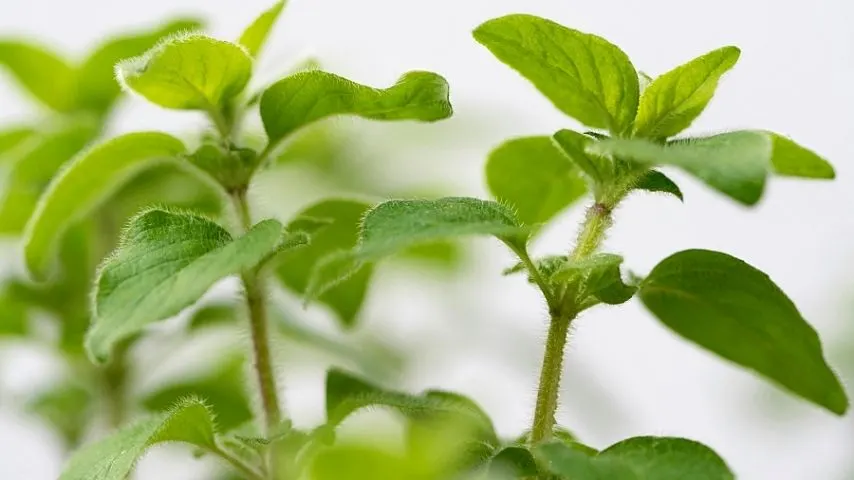
Oregano can be grown in an aquaponics system if you’re living in an area with warm and sunny climates.
It is a culinary herb with low nutrient requirements. It is a common seasoning on most household dishes, especially dried Oregano.
People who live in sunny and warm climates should ideally plant Oregano in their aquaponics system.
- Scientific name: Origanum vulgare
- Family: Lamiaceae
- Temperature: 55-70⁰ F (12 – 21°C)
- Soil: Plant the selected seeds in the grow bed of the aquaponics system.
- pH: 6.0 – 8.0
- Environment: warm and sunny environment.
- Humidity: Cannot deal with high humidity.
12. Pineapple
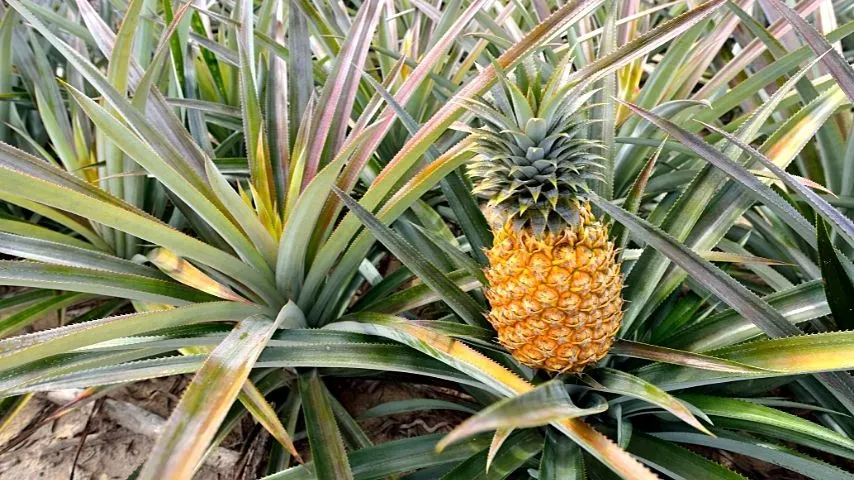
Another slow-growing yet low-maintenance plant you can grow in an aquaponics system is the Pineapple.
Pineapple is a slow-growing plant that requires a special environment and proper care for its growth.
Despite being a challenging plant to grow, once planted, pineapples only require low maintenance.
- Scientific name: Ananas comosus
- Family: Bromeliaceae; Juss.
- Temperature: 59 – 81°F (15 – 27°C)
- Soil: they do not need soil or substrate. Absorbs nutrients through roots and leaves.
- pH: Around 6.5
- Environment: They require 7-8 hours of sunlight per day which further extends to 10-12 hours. They should be sprayed with nutrients every day to ensure absorption through leaves.
- Humidity: Moderate to high humidity.
13. Watercress
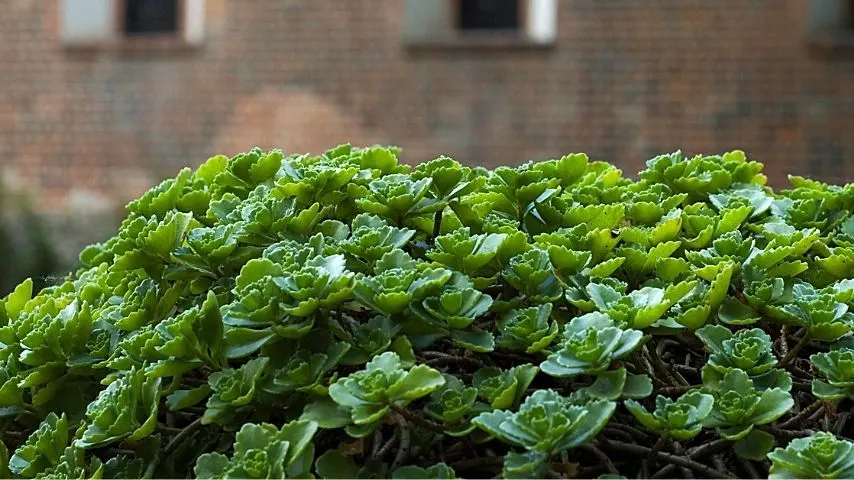
Watercress is another low-maintenance plant
Watercress is a low-maintenance herb with low nutrient requirements. It is a plant for the cool weather but also thrives in warmer temperatures as well.
- Scientific name: Nasturtium officinale
- Family: Brassicaceae
- Temperature: 50°-60°F (10 – 15.5°C)
- Soil: Substrate is not required. It can be planted on floating rafts with cotton wool or hemp fibers at the base.
- pH: 6.0 – 8.0
- Environment: temperate climates.
- Humidity: High humidity is preferred.
14. Bok Choy

Bok Choy or Pak Choi is a fast-growing vegetable
Bok Choy is a nutrient-rich vegetable commonly used in salads, burgers, and other culinary dishes.
Bok Choy can be a good choice for aquaponics because of its tolerance to a wide range of temperatures and fast-growing nature.
It requires low nutrients, hence making it an excellent choice for beginners. It can also be planted with other vegetables, including mustard, Kale, Mint, and lettuce.
The binomial nomenclature for Bok Choy includes:
- Scientific name: Brassica rapa subsp. chinensis
- Family: Brassicaceae
- Temperature: 55°-75°F (12.7 – 23.8°C)
- Soil: Seeds should be germinated in black cinder media.
- pH: 6.0 to 7.5
- Environment: Cool climate. Requires 3 – 5 hours of light daily.
- Humidity: High relative humidity
15. Kale
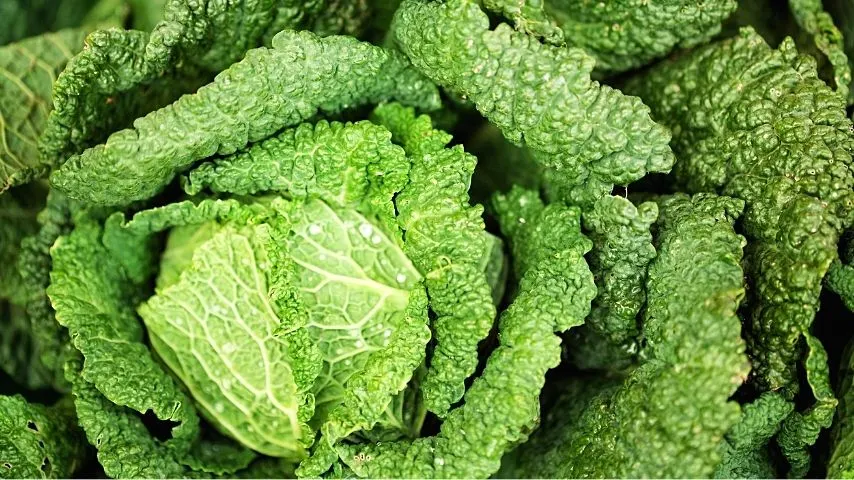
Kale is another fast-growing vegetable like the bok choy
Kale is a fast-growing vegetable similar to lettuce. It requires low nutrient composition and should be monitored properly because of its invading tendency.
It requires frequent harvesting and adds beauty and elegance to your garden. Its green color gives a fresh look to the aquaponics system.
- Scientific name: Brassica oleracea var. sabellica
- Family: Brassicaceae
- Temperature: 55°-70°F (12.7 – 21°C)
- Soil: roots of the plant are submerged in the water tank.
- pH: 6.0 to 7.5
- Environment: cannot stand high-temperature fluctuations.
- Humidity: 55% – 65%
16. Arugula

Arugula
Arugula is a delicious vegetable full of nutrients and adds a fresh look to your garden with its bright green leaves.
It comes in many varieties and is used as a topping, in salads, and added to sauces. It can provide you with delicious salad toppings throughout the winter and early spring.
- Scientific name: Eruca vesicaria
- Family: Brassicaceae
- Temperature: 45° to 65°F (10-18°C)
- Soil: Seeds are planted in the media bed, which is 10×20 inches.
- pH: 6.0 to 7.5
- Environment: Cool weather is preferred.
- Humidity: low humidity
17. Basil

Basil is an aromatic herb that adds visual appeal to your aquaponics garden.
Basil is an aromatic herb commonly used in sauces and Italian food. It has various varieties and colors that add a visual appeal to an aquaponics system.
It has low nutrient requirements and many health benefits, which makes it perfect for cultivating in your garden.
The binomial nomenclature for Basil includes:
- Scientific name: Ocimum basilicum
- Family: Lamiaceae
- Temperature: 65° to 85° F (18 – 29°C)
- Soil: The seeds are planted in gravel media beds above the tank system.
- pH: 5.5 to 6.5
- Environment: Warm weather with 6 – 8 hours of sunlight daily. They should be planted at a distance.
- Humidity: 40% to 60%
18. Mint
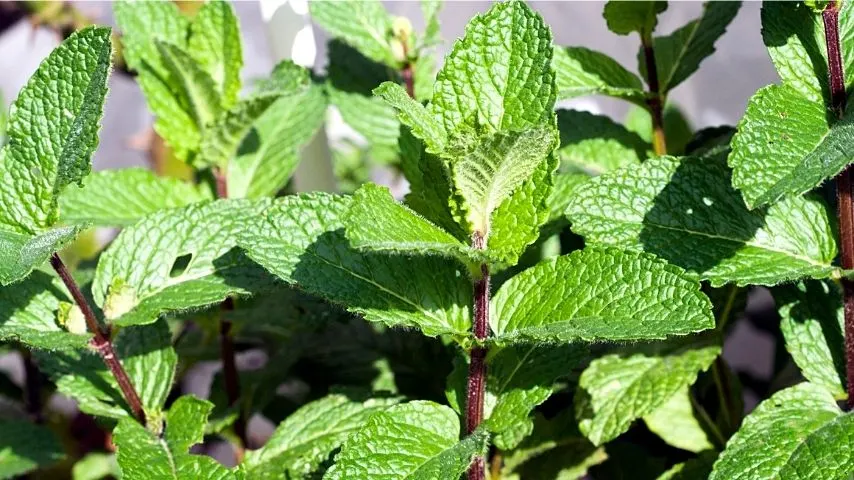
The clean and hygienic conditions of an aquaponics system can help add freshness and taste to your Mint plant.
Mint is considered best for an aquaponics system because the clean water and controlled hygienic conditions enhance its taste and freshness.
Mint requires low nutrients and has an aggressive growth rate which needs to be monitored. It can also be planted alongside other vegetables and helps enhance their tastes.
- Scientific name: Mentha
- Family: Lamiaceae
- Temperature: 65° to 70°F. (18 – 23.8°C)
- Soil: Roots of the plant are suspended directly in nutrient-rich water using pipes with holes.
- pH: 6.5 to 7.0.
- Environment: Space of 18 to 24 inches between plants is preferred, along with partial shade.
- Humidity: Humid conditions are best for the plant to thrive.
19. Chives

Chives, with its purple edible flowers, require only little nutrients
Chives are similar to onions that also produce edible purple flowers. The flowers add beauty to the garden, and chives also have many benefits.
They also require fewer nutrients to grow. They are also used as salad toppings as well as in omelets and other culinary dishes due to their onion-like taste but are less tangy.
- Scientific name: Allium schoenoprasum
- Family: Amaryllidaceae
- Temperature: 65° to 80°F. (18 – 26.6°C)
- Soil: The planting media should be composed of Perlite, vermiculite, and organic matter.
- pH: 6.1 to 6.8
- Environment: the plant requires 10 to 12 hours of natural or artificial light to grow.
- Humidity: 80%
20. Parsley
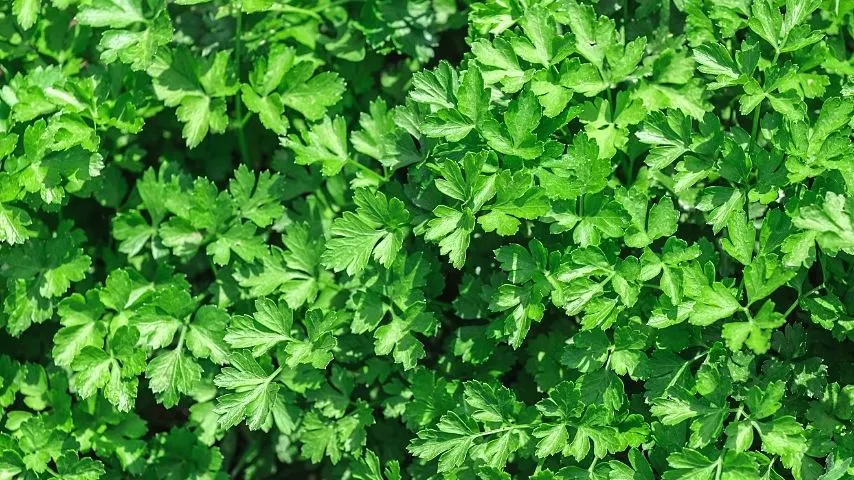
You can easily grow parsley in an aquaponics system due to its similarities with oregano and mint.
Parsley is a leafy and refreshing herb best for aquaponics systems because of its similarity to Oregano and Basil. It is used in many dishes and as a seasoning.
It is very nutritious and essential to remove harmful toxins from our bodies and reduce cellular damage.
- Scientific name: Petroselinum crispum
- Family: Apiaceae
- Temperature: 59° to 77°F. (15° to 25°C)
- Soil: The seeds are first germinated separately and then transferred to the aquaponics system.
- pH: 6.0 to 7.0
- Environment: It requires full sunlight for 8 hours daily and then partial shade afterward.
- Humidity: 50% to 70%
21. Sage
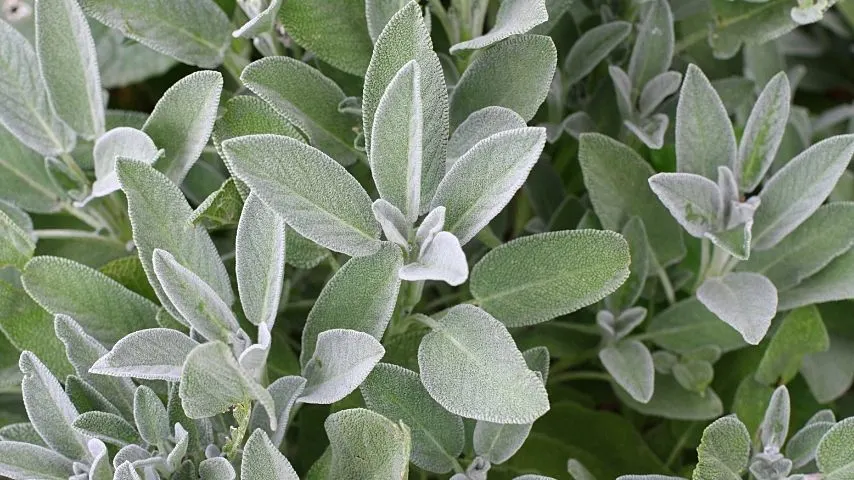
Sage is a grayish green herb that requires a low-nutrient concentration to thrive.
Sage is a grayish-green herb commonly used as stuffing for thanksgiving turkey and also as a salad. It is very simple to grow and requires low nutrient composition in the aquaponics system.
It is very beneficial and full of nutrients. Like Mint, it thrives in the aquaponic setup.
- Scientific name: Salvia officinalis
- Family: Lamiaceae
- Temperature: 60°- 70°F (15.5 – 21°C)
- Soil: the seeds are planted in the media bed.
- pH: 6.5 to 7.0
- Environment: Full sunlight required.
- Humidity: 50% to 70%
22. Carrots
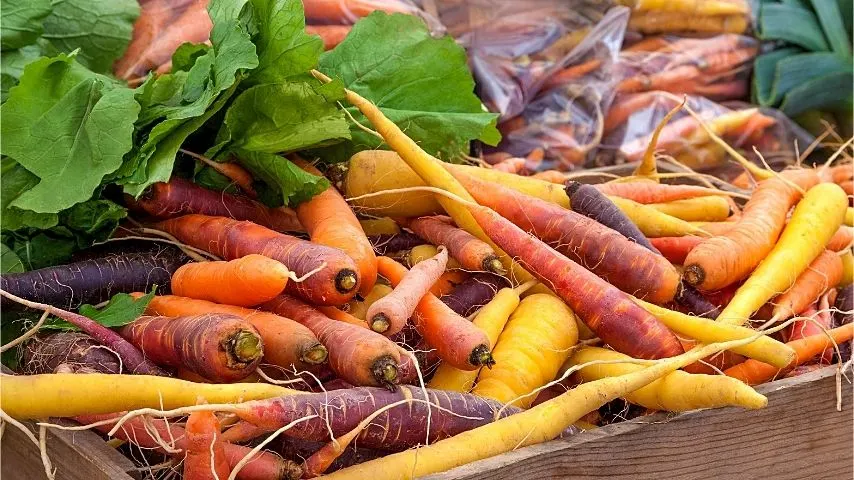
Carrots is a challenging vegetable to grow in an aquaponics system
Carrots are among the most popular vegetables used worldwide due to their numerous health benefits and high fiber content.
Though planting carrots in an aquaponics system may be hard, it can be achieved if all the instructions are followed accurately.
Growing carrots require patience because it takes a long time for the seeds to germinate, and they also need medium nutrient composition.
- Scientific name: Daucus carota
- Family: Apiaceae
- Temperature: 60°- 70°F (15.5 – 21°C)
- Soil: The media bed comprises small clay balls or gravel for the roots of the carrots to grip something.
- pH: 6.8 to 7.2
- Environment: cooler spring climates
- Humidity: 40% to 70%
23. Fennel
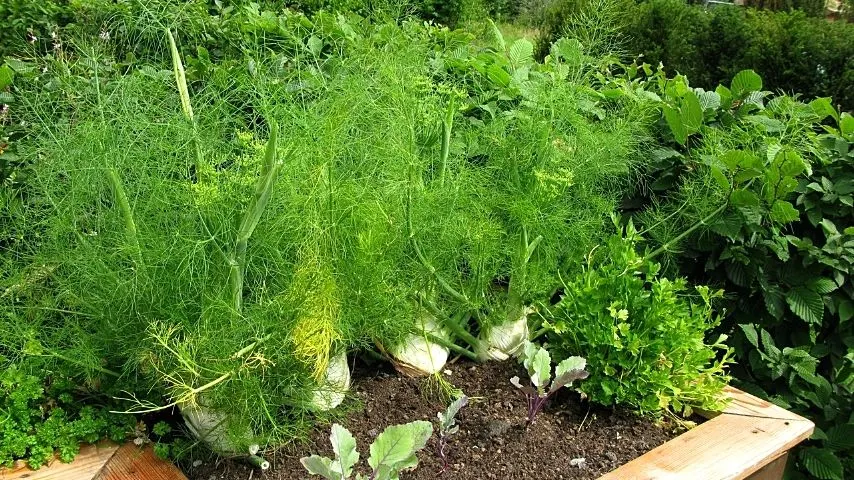
Fennel is another great herb due to its medicinal properties.
Fennel is the right herb to grow for people living in sunny locations because of its sunlight requirements. Fennel is a nutritious herb used to cure many issues in our bodies.
It has a good flavor and low nutrient requirement, due to which it is easy to care for.
Fennel has medicinal benefits, making it the best choice for the aquaponics system.
- Scientific name: Foeniculum vulgare
- Family: Apiaceae
- Temperature: 60°- 75°F (15.5 – 23.8°C)
- Soil: Seeds are planted in the growing media of choice.
- pH: 6.5 to 8.5
- Environment: Requires constant 6 – 12 hours of artificial light or natural lighting.
- Humidity: 40% to 60%
24. Lettuce
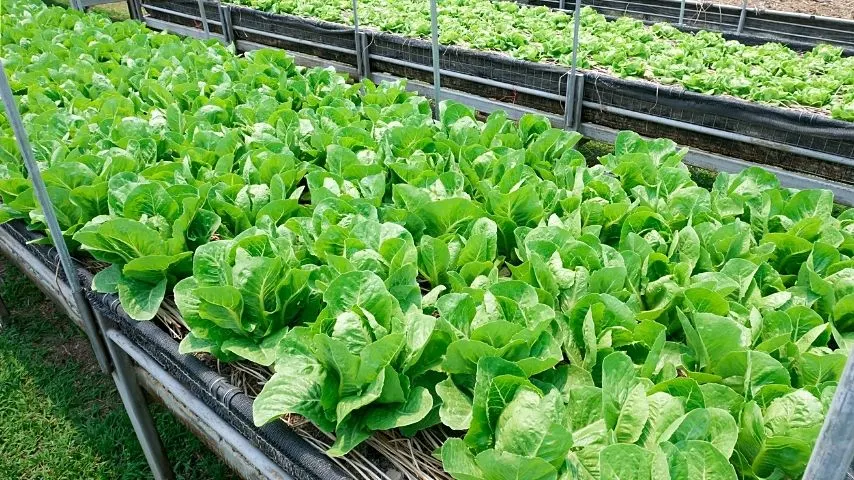
Loose leaf, Buttherhead, and Romain Lettuce grow best
Lettuce has various types, but certain types grow well in aquaponics.
Butterhead, loose-leaf, and romaine can be considered best to grow in aquaponics, but they require maintenance because of their ability to attract pests.
- Scientific name: Lactuca sativa
- Family: Asteraceae
- Temperature: 60 – 65°F (15.5 – 18.3°C)
- Soil: the substrate is not required since the water in which fish are kept is used to provide the essential nutrients. The nutrients are absorbed through the roots by using rafts or grow beds.
- pH: 5.5 – 6.2
- Environment: Good airflow is required, and the spacing between each plant should be at least 7 inches to ensure maximum growth.
- Humidity: between 50% to 70%
25. Spinach

Another plant with pest-repellant properties, the Spinach
Spinach is an excellent source of nutrition due to the many minerals and vitamins present in it. This low-calorie vegetable requires low nutrition and also a pest-repellant.
Spinach needs to be taken care of because too much heat exposure results in bitter-tasting crop production.
The harvest should be done before the crop reach full maturity for ideal results.
- Scientific name: Spinacia oleracea
- Family: Amaranthaceae
- Temperature: 45° to 75°F (7.2 – 23.8°C)
- Soil: Soilless media is required, e.g., Perlite or hydroton. The roots should be cleaned properly before planting into the aquaponics system.
- pH: 6.0 to 7.0
- Environment: Warm days and cold nights are preferred.
- Humidity: low humidity is preferred.
26. Collard Greens

Collard Greens are a low-nutrient-requiring plant.
Collard green is a leafy plant with a low nutrient requirement. It is easy to grow and likes moderate to cool temperatures.
They are very common among Southern cuisines as salad dressings and as a replacement for tortilla wraps.
- Scientific name: Brassica oleracea var. viridis
- Family: Brassica oleracea
- Temperature: 40° to 50°F (4 – 10°C)
- Soil: Seeds or seedlings are planted in gravel media beds of the aquaponics system.
- pH: 5.5 to 6.5
- Environment: 6 hours of sunlight every day with partial shade. Thrives in cooler climates.
- Humidity: 40% to 60%
27. Tomatoes

Tomatoes grown in an aquaponics system are known to have better quality, are bigger and juicier than those grown using traditional methods.
Tomatoes are considered best for aquaponics setups, and it is known that aquaponic tomatoes are better, bigger, and juicier than those grown in the traditional structure.
- Scientific name: Solanum lycopersicum
- Family: Solanaceae
- Temperature: 75 – 85°F (24 – 29°C)
- Soil: A media bed composed of clay pebbles and gravel is used for planting the seeds.
- pH: 6.0 and 6.5
- Environment: Total sun exposure and warm environments.
- Humidity: 60% to 85%
28. Turnip Greens
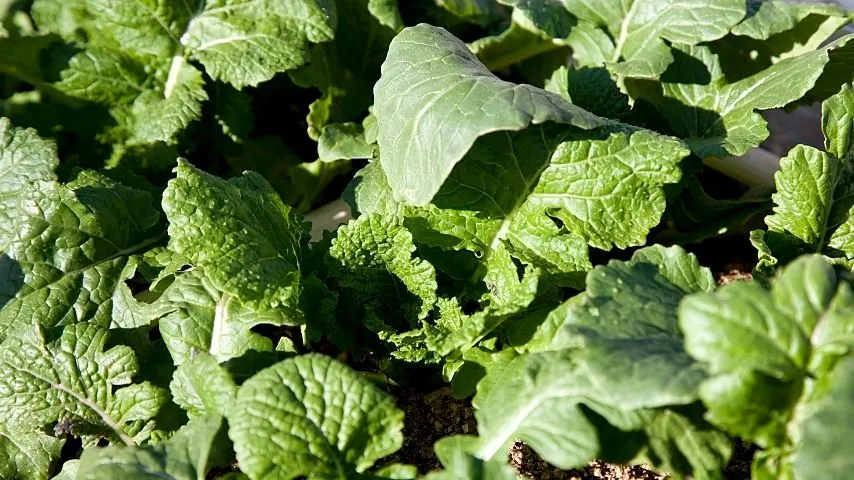
Turnip Greens are another low-nutrient requiring and fast-growing plant
Turnip greens are another leafy green vegetable commonly used as a salad dressing with dark green leaves. It requires low nutrient composition and monitoring due to its fast growth rate.
- Scientific name: Brassica rapa subsp. rapa
- Family: Brassicaceae
- Temperature: 40 – 75°F (4 – 24°C)
- Soil: Seeds are planted in media beds made of hydroton.
- pH: 6.0 to 6.5
- Environment: Sunny environment and 6 – 8 hours of sunlight.
- Humidity: 50% to 70%
29. Thyme

Thyme is another aromatic herb that can be grown hydroponically
Thyme is an aromatic herb used as a spice in many dishes. It also has a low nutrient requirement and many varieties that can be grown easily in an aquaponic system.
- Scientific name: Thymus vulgaris
- Family: Lamiaceae
- Temperature: 70 °F (21°C)
- Soil: Media bed consisting of Vermiculite, Perlite, Oasis cubes, and Coco Peat.
- pH: 6.0 to 8.0
- Environment: Moderate temperatures with 6 – 8 hours of sunlight daily.
- Humidity: Grows well in a humid climate.
30. Dill

Dill is a herb with medicinal properties
Dill is a green herb with many varieties and medicinal benefits and is also used as a spice in many cuisines.
Depending on the required flavor intensity, it can be used as a dried herb or fresh.
- Scientific name: Anethum graveolens
- Family: Apiaceae
- Temperature: 60°- 70°F (15.5 – 21°C)
- Soil: Growing media comprising Coco Peat, Perlite, Oasis cubes, and Vermiculite.
- pH: 5.5 to 6.5
- Environment: 8 hours of sunlight daily and warm climates.
- Humidity: hot and humid environment is preferred.
32. Peppermint

The Peppermint plant
Peppermint is another green herb known for its beneficial properties and medicinal uses.
It can be used as a dried herb or fresh, but the fresh herb may be strong for cooking purposes.
- Scientific name: Mentha piperita L.
- Family: Lamiaceae
- Temperature: 55°- 70°F (12.7 – 21°C)
- Soil: Growing medium should consist of coco peat or 20% perlite.
- pH: 6.0 to 7.0
- Environment: 5 – 6 hours of full sun and partial shade.
- Humidity: Shady and humid conditions.
32. Coriander
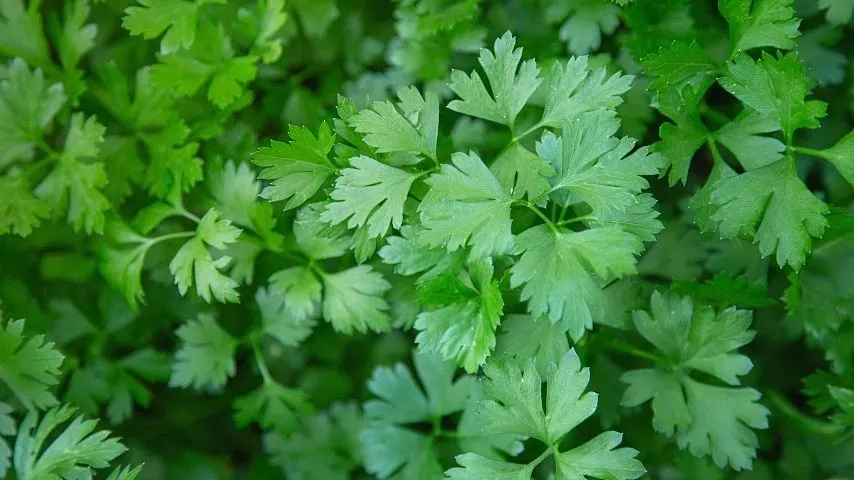
No matter what aquaponics setup you have, you can easily grow Coriander in it
Coriander is another herb with low-nutrient requirements. The whole plant is edible, even the roots, known for its health benefits.
- Scientific name: Coriandrum sativum
- Family: Apiaceae
- Temperature: 65°- 70°F (18 – 21°C)
- Soil: Seeds are planted in a media bed containing perlite or coco peat.
- pH: 6.2 to 6.8
- Environment: Cool climate and partial shade with a maximum of 4 – 5 hours of sunlight.
- Humidity: high humidity is preferred.
33. Lemongrass
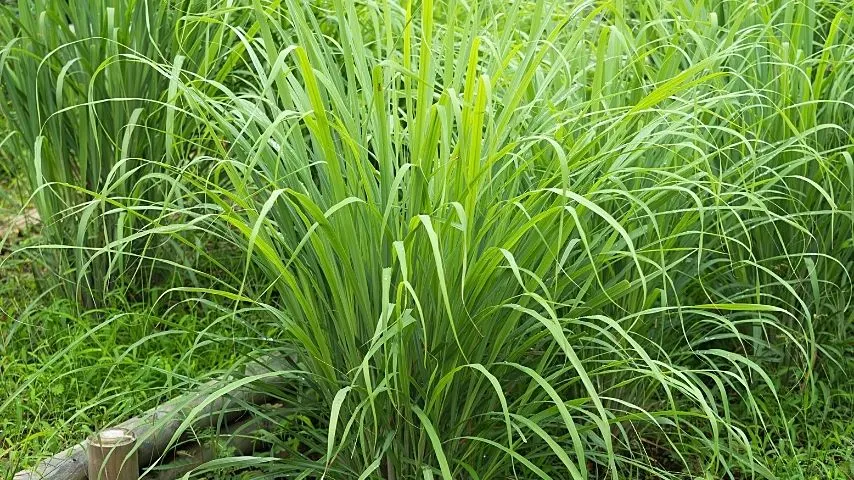
Lemongrass is a citrusy herb
Lemongrass is a citrus herb with a lemon-like flavor and various health benefits that reduce stomach problems.
It grows well in an aquaponics system and is hard to find in local markets, which can be a good option to plant in your aquaponics garden.
- Scientific name: Cymbopogon citratus
- Family: Poaceae
- Temperature: 65°- 85°F (18 – 29°C)
- Soil: Seeds are planted in growing media consisting of vermiculite, coconut coir, and Perlite.
- pH: 6.5 – 7.0
- Environment: Tropical region and hot weather with 6 – 8 hours of sunlight daily.
- Humidity: high humidity is preferred.
34. Cranberries
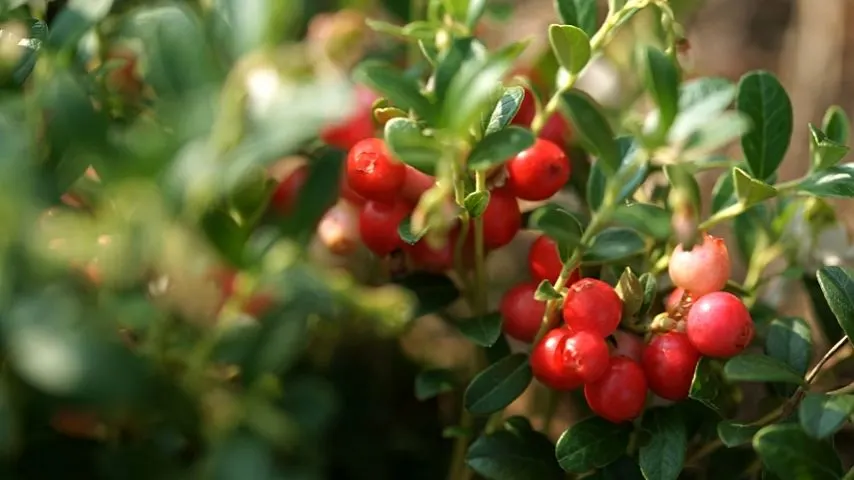
Cranberries are cold-tolerant and have low nutrient requirements
Cranberry is a delicious fruit used in numerous deserts and has many varieties.
Its low nutrient requirement and ability to tolerate cold temperatures make it a good choice for aquaponics.
- Scientific name: Vaccinium subg. Oxycoccus
- Family: Ericaceae
- Temperature: 32°- 45°F (0 – 7.2°C)
- Soil: Growing media should consist of Cocopeat and clay pebbles.
- pH: 4.0 to 5.5
- Environment: Cold weather is preferred, usually after frost. A dry and hot climate should be avoided.
- Humidity: Humid and cold weather is preferred.
35. Chamomile
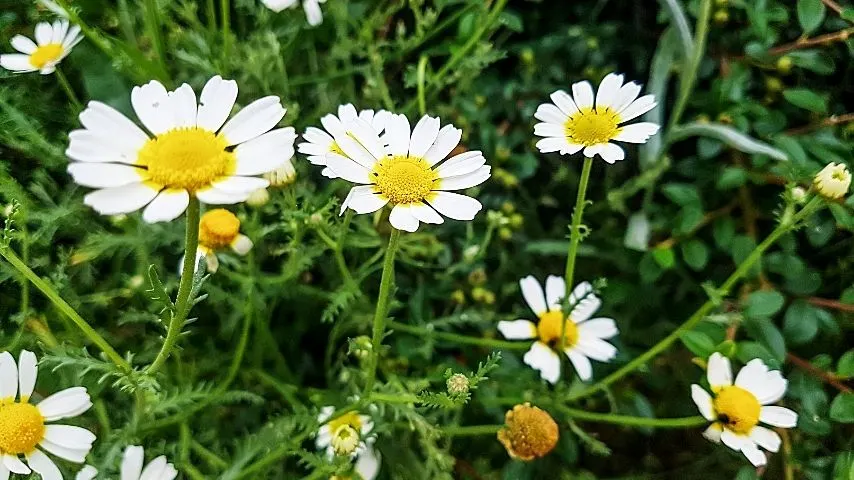
Various varieties of Chamomile can be grown
Chamomile is widely known for its herbal tea and pleasing flavor, but it also has health benefits. It also adds beauty to the garden because of its attractive appearance.
- Scientific name: Matricaria chamomilla
- Family: Asteraceae
- Temperature: 55°- 60°F (12.7 – 15.5°C)
- Soil: The media bed should have a starter plug and should consist of Rapid Rooters or Oasis Rootcubes as growing media in which the seeds are planted.
- pH: 5.6 to 7.5
- Environment: Moderate climate with 4 – 5 hours of sun and partial shade in case of extreme heat.
- Humidity: 50% to 70%
36. Watermelon
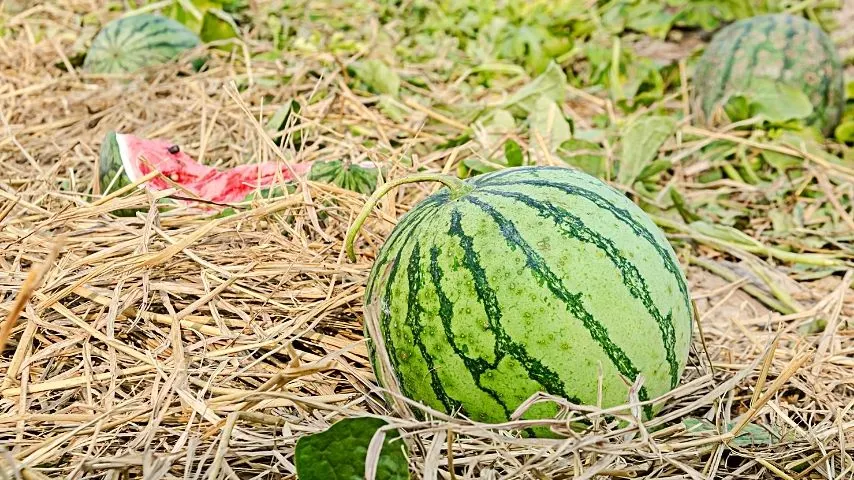
Watermelons need a lot of nutrients.
Watermelon is recognized worldwide as a summer fruit because of its hydrating properties.
Despite having a high nutrient requirement, watermelon is best for aquaponics because of its high water content.
- Scientific name: Citrullus lanatus
- Family: Cucurbitaceae
- Temperature: 70°F (21°C)
- Soil: grow medium should have the ability to store moisture in it. Coconut coir and peat moss are considered best to fulfill this requirement.
- pH: 6.0 to 6.8
- Environment: warm climate with 8 – 10 hours of daylight every day. Install artificial lights if it isn’t possible to provide its lighting requirements naturally
- Humidity: 60% to 80%
37. Mushroom

Planting Mushrooms in an aquaponic system ensures that you’ll have a year-round supply
Mushrooms are different than other vegetables or fruits and require different methods for their growth.
- Scientific name: Agaricus bisporus
- Family: Agaricaceae
- Temperature: 63 – 68°F (17.2 – 20°C)
- Soil: Media bed depends upon the type of mushroom, e.g., standing logs for oyster mushrooms and moist gravel and expanded clay aggregate for veggies.
- pH: 7.5 to 8.0
- Environment: dark and moderate environment with no more than 5 hours of sunlight exposure.
- Humidity: 80% or higher
38. Cabbage

Cabbage is another low-maintenance and easy-to-grow vegetable
Cabbage is an easy-to-grow, low-maintenance plant with a fresh flavor.
It is widely used in salads and dishes and can also tolerate climatic fluctuations.
- Scientific name: Brassica oleracea var. capitata
- Family: Asteraceae
- Temperature: 45 – 75°F (7.2 – 24°C)
- Soil: The raft system provides the nutrients, and roots directly absorb the nutrients from the tank water.
- pH: 6.2 – 6.6
- Environment: sunny locations with 6 hours or more of sun daily.
- Humidity: between 55% to 70%
39. Avocado

Another tasty and highly beneficial plant to grow is the Avocado
Avocado is a tasty, creamy, and nutrient-rich crop with many purposes. It is used as a raw fruit with breakfast or as a spread for toast.
- Scientific name: Persea americana
- Family: Lauraceae
- Temperature: 60 – 85°F (15.5 – 29°C)
- Soil: Seeds are planted in a growing medium above the aquaponics tank. The medium should consist of Perlite, vermiculite, and coconut fiber.
- pH: 6.0 to 6.5
- Environment: Sunny environment and warm temperatures – provide at least 6 hours of sunlight daily and partial shade for extreme conditions.
- Humidity: Can tolerate humid environments
40. Cherries

Cherries can be grown in an aquaponics system if you can meet its high nutrient requirements.
Cherries are delicious and nutritious sweets used in deserts and also consumed directly.
They have many nutritional benefits but require a high nutrient intake in aquaponics systems.
- Scientific name: Prunus avium
- Family: Rosaceae
- Temperature: 45°F (7.2°C)
- Soil: Growing media is required to plant the seeds. The media can be Perlite, Coconut Coir, and Lava Rock. Lava rock should be cleaned before placing it in the media bed.
- pH: 6.5
- Environment: Sunny weather is preferred with 6 – 8 hours of light daily, and the shade should be avoided. Dry and cool conditions are chosen.
- Humidity: Dislikes humidity.
Best Herbs for Aquaponics
The best herbs to grow in an aquaponic system are:
- Peppermint
- Parsley
- Oregano
- Basil
- Chives
- Sage
- Thyme
- Dill
- Coriander
- Fennel
- Rosemary
Best House Plants for Aquaponics
Some of the best houseplants to grow hydroponically are:
- Philodendron plants
- Monstera
- Anthurium
Aquaponic Growing
Aquaponics combines agriculture and hydroponics. It is a self-sustained system. The combination of plants and aquatic species, such as fish, allows a symbiotic system.
Ideal plants have low nutrient needs and are more tolerant to changing water conditions. The pH levels are especially important as it influences the ability of plants to take nutrients in.
Aquaponic Systems
Many aquaponics systems are on the market, from small-scale systems to professional commercial growing units.
Media bed systems
A common system is a media bed system. In this setup, gravel or clay is used to grow plants. The plants sit directly in water.
Vertical aquaponics
In a vertical system, plants are grown vertically. They are stacked in layers. These systems allow us to start small and extend further into a bigger system. You can start vertical growing in small spaces. A balcony, backyard, or a room are sufficient.
NFT systems
Nutrient film technique systems use pipes that are stacked horizontally. Water is flowing through the pipes constantly. This allows for nutrients and water to get to the plant roots. The plants themselves are placed in little holes in the pipes.
DWC systems
In a deep water culture system (DWC), the plants are placed in buckets. Only the roots are allowed to touch the water. The water itself is well aerated. Sufficient oxygen is needed for the roots.
Ebb and Flow System
An Ebb and Flow system uses a water pump on a timer. The water pump allows for water to flow in a container or bed above the water reservoir multiple times a day. The lower container contains nutrients. This works with aquatic life that produces wastewater and artificial nutrients from liquid fertilizers.
I hope this list of the best plant for aquaponics is helpful. While almost all plants can be grown in hydroponics, some are more suited than others.

Daniel has been a plant enthusiast for over 20 years. He owns hundreds of houseplants and prepares for the chili growing seasons yearly with great anticipation. His favorite plants are plant species in the Araceae family, such as Monstera, Philodendron, and Anthurium. He also loves gardening and is growing hot peppers, tomatoes, and many more vegetables.

![40 Best Plants For Aquaponics — Great Picks [2024]](https://plantophiles.com/wp-content/uploads/2022/05/40-Best-Plants-For-Aquaponics-720x405.jpg.webp)
